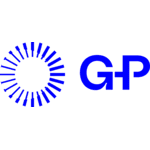For a more connected, higher performing workforce, you may want to consider a little less talk and a little more active engagement. After all, highly engaged teams show 21 percent greater profitability, as well as improved productivity and loyalty.
Employee engagement is often confused with job satisfaction, but it encompasses much more than a worker’s happiness with their role. Instead, engagement consists of concrete behavior to actively uphold workers as stakeholders in your company’s health. With a focus on alignment, engagement measures workers’ dedication and enthusiasm for your company’s success. In short, it’s more than just a feeling.
Business case for engaged employees
Executives from around the world agree that enhancing employee engagement is one of their top five global business priorities. The following chart highlights business leaders’ focus on effective employee engagement strategies.

Building a solid employee engagement strategy involves a few steps: examining current work culture problems, creating solutions alongside employees, and then actively implementing changes to improve employee satisfaction. Companies are wise to continue the conversation — ongoing input can help bolster employees’ happiness.
When considering an employee engagement program, leaders will want to know the cost to the business. Generally, it’s relatively affordable. A SHRM/Globoforce survey indicates that companies are most satisfied with their engagement programs when they’ve invested around 1 percent of payroll.
Strategies to build employee engagement
Creating a culture of engagement requires more than sending out an annual employee survey and then leaving managers to sift through the results. It requires your company to take a close look at how core engagement elements align with your people strategies. Consider the following initiatives.
Champion shared values and mission
Your core values should shine through every aspect of your company culture — from employer branding to hiring to employee management. Indeed, every employee touchpoint should reinforce your values; a meaningful, inspiring purpose leads to a sense of shared investment. Keep employees in the know by launching an internal monthly newsletter.
Listen to the employee voice
Employees need a straightforward and anonymous way to share the truth about their work experience with executives. Companies are wise to heed the “employee voice” as an ongoing component of decision-making. When you ask your employees their opinions — and do it often — they’ll see that you value and respect their input. In turn, they will become more engaged with the company culture that you’re building together.
You can gather employee feedback through both deep-dive and pulse surveys. The questions in an employee engagement survey should address workers’ day-to-day experiences, their interactions with management, and their opinions of the overall company mission. Timely, crowdsourced insights like these can align teams and leaders around action.

Employee voice platform Waggl, above, allows real-time crowdsourced insight to align teams and leaders around action.
Focus on diversity and inclusion
Upholding employees from a mixture of age, gender, and cultural backgrounds allows for varying perspectives and life experiences that can enrich your company in many ways. Diversity protects your teams from groupthink, tears down biases, and creates rich discussions.
To educate employees on equity and justice, you can develop periodic training. Encourage employees to explore their opinions in open discussions; with vulnerability comes trust. Work like this has been proven to pay off — Diverse companies, as reported by McKinsey, outperform less diverse ones by 36% in terms of profitability. than non-diverse teams.
Involve remote employees
Work-from-home is more common than ever. Upwork's research indicates that by 2025, remote work in the U.S. will see a substantial 87% increase from pre-pandemic levels, with 36.2 million Americans expected to work remotely. To help employees maintain their productivity and connectedness, communication is key. You should set up additional virtual check ins, introduce video-conference meetings, and utilize pulse surveys.
Related: Best Ways to Engage Remote Employees
Foster career growth
Employees feel more connected to a company in which they have a future. A survey by LinkedIn reveals that 94 percent of employees say they’d stay at their job longer if the company invested in their career. To keep employees informed on current openings, you can establish an internal job board and support promotion from within the company.
When it comes to climbing the corporate ladder, good leadership can provide a great boost. Sixty-seven percent of employees report heightened engagement when they feel they have the right manager in place. With this in mind, hold your managers accountable to employee engagement by including “coaching” as part of their performance evaluations.
To get team members on the same page, institute periodic — and frequent — check ins between employees and their managers. These one-on-ones should produce feedback that is easy, timely, and relevant. Use technology to ensure an action-oriented effort. With certain software, you can also equip managers with growth tools such as recommended focus areas, curated learning resources, and suggested actions specific to the dynamics of their team.

Performance management software like 7Geese, shown here, helps document and improve upon manager-employee meetings.
Incentivize engagement
In an HBR survey, nearly two-thirds of executives said they believe recognition for high performers is the most impactful employee engagement driver. Consider dedicating a budget for managers to reward high-performing employees with professional development opportunities. And don’t forget that a simple thanks can go a long way.

Kazoo employee-recognition software, above, is designed to connect your employees and encourage a culture of appreciation.
Build engagement into your workspace
Your office environment plays a significant role in employee engagement. In today’s workplace, cubicles are rare because they isolate workers and hinder brainstorming. Open up your floor plan to make space for communication and collaboration among employees. Relationships are critical to building a sense of belonging in your engaged workforce.
Equip human resources teams
Giving employees recognition, collecting workers’ feedback, and tracking key results can be much more manageable with HR software. If you’re new to the scene, we’ve done the preliminary work for you. Check out our comprehensive guide to the best employee engagement platforms. We focus on the best platforms, as well as benefits, pitfalls, and pricing, in order to save you up to 10 hours of research. Be sure to let us know what works for you.













.png)













